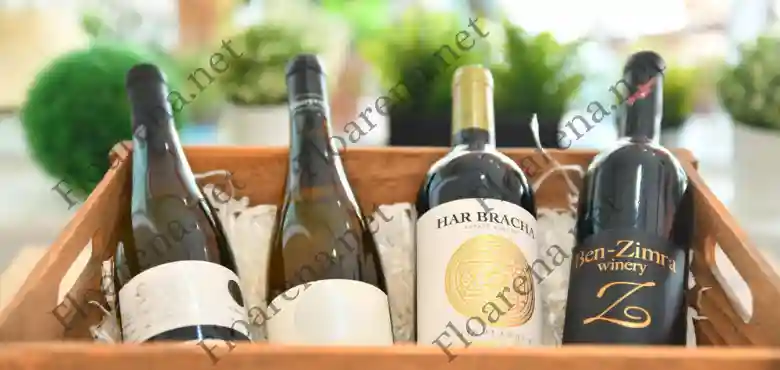Whether you’re a wine connoisseur or someone who enjoys an occasional glass, one thing’s for sure – the packaging matters. Wine packaging for every type of consumer has seen a revolution, making it easier to pick a bottle that fits your taste and style.
Presentation can be just as important as what’s inside; it tells a story and sets the stage for the experience. Nowadays, you’ll find a variety to suit every palate, from the casual drinker to the dedicated sommelier. Let us explore different types of wine packaging and what is best for each type of consumer.
For Beginners
If you are targeting a beginner consumer, the packaging should be simple and straightforward. You want to attract new customers with something easy to read and understand, so they do not feel intimidated by the wide range of options.
One option for beginners is boxed wine. This type of packaging is perfect for those who are still experimenting with different types of wines since it usually contains several glasses worth in each box.
The box has a spout, making it easy to pour and resealable to keep the wine fresh. Boxed wine is generally cheaper than bottled wine, making it an excellent option for those on a budget.
For Casual Drinkers
Casual drinkers often look for convenience and a good-looking bottle to bring to a friend’s dinner or enjoy at home. The bottle design for this group should be fun and modern, but not too complex. It’s great if the label gives a quick hint about the taste inside, like “fruity” or “bold,” so picking the right wine feels easy.
Bottles with screw caps are a great fit for casual drinkers. They’re simple to open and close if you’re saving some for later.
Plus, you don’t have to worry about finding a corkscrew. These designs tend to be less formal, but they still keep the wine just as fresh as traditional corks do.
Another option for casual drinkers is canned wine. Packaging of canned wine has seen a surge in recent years, and it’s no surprise why. It’s lightweight, easy to transport, and perfect for outdoor activities like picnics or concerts.
For Occasional Drinkers
Occasional drinkers might not keep up with every trend in the wine industry, but they do appreciate a good glass when the moment is right. This group prefers wine that’s easy to choose without too much fuss.
A nice bottle of wine with a clear, simple label works well for them. It should tell them what to expect from the wine without any complex jargon.
Gift sets are also a favorite among occasional drinkers. These sets often come with a bottle of wine and a few extras, like glasses or a corkscrew. They make grabbing a gift for a party or special event simple and thoughtful.
The packaging should look elegant and inviting, enticing those who might not sip wine often to indulge on those special occasions.
Wine pouches are another option for occasional drinkers. While they may seem unconventional, these pouches offer many benefits. They’re lightweight and easy to carry, making them perfect for traveling or outdoor events.
They also have a smaller carbon footprint than traditional bottles, making them a more environmentally friendly choice. Plus, they can keep the wine fresh for up to four weeks after
For Dedicated Sommeliers
For those with a deep passion for wine and dedicated sommeliers, every detail of the wine experience matters. These connoisseurs value high-quality wine bottle suppliers who provide premium packaging that preserves the integrity of the wine. A sommelier’s bottle often features a traditional cork that many believe enhances the aging process.
The packaging for these experts is not just about looks; it’s about functionality and preserving tradition. Information about the origin, grape variety, and vintage year should be clearly displayed.
Simple classic designs resonate with sommeliers, as the bottle’s content is the real star of the show. They also appreciate unique and limited edition packaging, making it feel like a collector’s item.
For Eco-Conscious Consumers
Eco-conscious consumers are deeply aware of their environmental impact, often seeking sustainable options. Wine packaging for this group focuses on biodegradable or recycled materials. These individuals appreciate types of bottles that are made from recycled glass or plant-based plastics, which minimize waste and pollution.
Labels on these wines are often made from recycled paper and use natural, soy-based inks. It is common to see eco-friendly certifications and symbols that assure the conscious consumer of the product’s low environmental impact.
For the Health-Conscious
Health-conscious consumers often search for wines that align with their lifestyles. They might opt for wines with fewer sulfites or no added sugars. Organic wines that are made using natural processes and without chemical preservatives are particularly appealing to this group.
The packaging should highlight these health aspects. Use clear labels that boast the wine’s organic certification or its low-sulfite content. People can make quick, informed decisions that suit their health preferences.
Eco-conscious packaging doesn’t stop with bottles. Wine totes made from organic cotton or jute are popular for transporting wine sustainably. Simple in design but durable in nature, these carriers align with the eco-friendly values of the consumer.
For Tech-Savvy Enthusiasts
Tech-savvy enthusiasts are always ahead of the curve and prefer wine packaging. They appreciate smart labels that come to life through Augmented Reality (AR) apps. When they scan the label with their phone, they might be treated to a virtual tour of the vineyard or learn about the wine’s creation through interactive storytelling.
Tech-savvy enthusiasts also enjoy unique packaging that incorporates technology into its design. For instance, a wine bottle with a built-in LED light display could be the perfect party conversation starter. These individuals are eager to try new things and are attracted to brands that incorporate technology in their packaging.
The Impact of Wine Packaging
Wine packaging does more than just hold wine; it speaks to the buyer. It can make new wine lovers feel welcome or give an expert something to treasure.
Good design tells us what’s inside and helps our planet too. People pick their wine by how it looks on the outside because it often matches their own style and values. In the world of wine, the right packaging really matters.
If you find this article helpful, you may visit our blog for more content.






